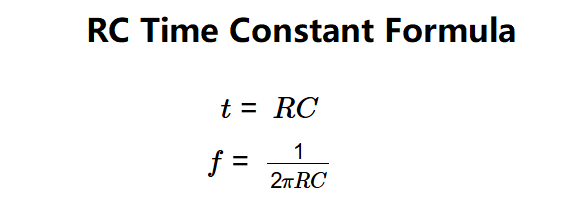 Home
Home
 Back
Back

Definition: This calculator computes the time constant (\( t \)) and characteristic frequency (\( f \)) of an RC (resistor-capacitor) circuit.
Purpose: It is used in electronics to determine how quickly a capacitor charges or discharges in an RC circuit, and the frequency at which the circuit operates, which is essential for designing filters, timing circuits, and signal processing systems.
The calculator uses the following formulas for an RC circuit:
Where:
Steps:
Calculating the RC time constant and frequency is crucial for:
Example 1: Calculate the time constant and frequency of an RC circuit with \( R = 10 \, \text{kΩ} \) and \( C = 100 \, \text{µF} \):
Example 2: Calculate the time constant and frequency of an RC circuit with \( R = 1 \, \text{MΩ} \) and \( C = 1 \, \text{nF} \):
Q: What does the RC time constant represent?
A: The RC time constant (\( t = RC \)) represents the time it takes for the capacitor to charge to approximately 63.2% of its final voltage (or discharge to 36.8% of its initial voltage) in an RC circuit.
Q: How does the time constant affect circuit behavior?
A: A larger time constant means the capacitor charges/discharges more slowly, leading to longer delays. A smaller time constant results in faster charging/discharging, useful for high-frequency applications.
Q: What is the significance of the characteristic frequency?
A: The characteristic frequency (\( f = \frac{1}{2 \pi RC} \)) is the cutoff frequency of the RC circuit, where the output amplitude drops to \( \frac{1}{\sqrt{2}} \) of the input amplitude in a filter application.